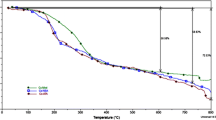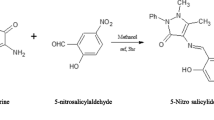Abstract
Here we have examined the association of an aureolic acid antibiotic, chromomycin A3 (CHR), with Cu2+. CHR forms a high affinity 2:1 (CHR:Cu2+) complex with dissociation constant of 0.08 × 10−10 M2 at 25°C, pH 8.0. The affinity of CHR for Cu2+ is higher than those for Mg2+ and Zn2+ reported earlier from our laboratory. CHR binds preferentially to Cu2+ in presence of equimolar amount of Zn2+. Complex formation between CHR and Cu2+ is an entropy driven endothermic process. Difference between calorimetric and van’t Hoff enthalpies indicate the presence of multiple equilibria, supported from biphasic nature of the kinetics of association. Circular dichroism spectroscopy show that [(CHR)2:Cu2+] complex assumes a structure different from either of the Mg2+ and Zn2+ complex reported earlier. Both [(CHR)2:Mg2+] and [(CHR)2:Zn2+] complexes are known to bind DNA. In contrast, [(CHR)2:Cu2+] complex does not interact with double helical DNA, verified by means of Isothermal Titration Calorimetry of its association with calf thymus DNA and the double stranded decamer (5′-CCGGCGCCGG-3′). In order to interact with double helical DNA, the (antibiotic)2 : metal (Mg2+ and Zn2+) complexes require a isohelical conformation. Nuclear Magnetic Resonance spectroscopy shows that the Cu2+ complex adopts a distorted octahedral structure, which cannot assume the required conformation to bind to the DNA. This report demonstrates the negative effect of a bivalent metal upon the DNA binding property of CHR, which otherwise binds to DNA in presence of metals like Mg2+and Zn2+. The results also indicate that CHR has a potential for chelation therapy in Cu2+ accumulation diseases. However cytotoxicity of the antibiotic might restrict the use.












Similar content being viewed by others
References
Aich P, Sen R, Dasgupta D (1992a) Interaction between antitumor antibiotic chromomycin A3 and Mg2 + I Evidence for the formation of two types of chromomycin A3-Mg2 + complexes. Chem Biol Interact 83(1):23–33
Aich P, Sen R, Dasgupta D (1992b) Role of magnesium ion in the interaction between chromomycin A3 and DNA: binding of chromomycin A3-magnesium (2 +) complexes with DNA. Biochemistry 31(11):2988–2997
Baguley B (1982) Nonintercalative DNA-binding antitumour compounds. Mol Cell Biochem 43(3):167–181
Behr W, Honikel K, Hartmann G (1969) Interaction of the RNA polymerase inhibitor chromomycin with DNA. Eur J Biochem 9(1):82–92
Chakrabarti S, Aich P, Sarker D, Bhattacharyya D, Dasgupta D (2000) Role of Mg2 + in the interaction of anticancer antibiotic, chromomycin A3 with DNA: does neutral antibiotic bind DNA in absence of the metal ion? J Biomol Struct Dyn 18(2):209
Chakraborty H, Devi PG, Sarkar M, Dasgupta D (2008) Multiple functions of generic drugs: future perspectives of aureolic acid group of anti-cancer antibiotics and non-steroidal anti-inflammatory drugs. Mini Rev Med Chem 8(4):331–349
Cons BM, Fox KR (1989) High resolution hydroxyl radical footprinting of the binding of mithramycin and related antibiotics to DNA. Nucleic Acids Res 17(14):5447–5459
Daniel KG, Harbach RH, Guida WC, Dou QP (2004) Copper storage diseases: Menkes, Wilsons, and cancer. Front Biosci 9:2652–2662
Das S, Dasgupta D (2005) Binding of (MTR) 2Zn2 + complex to chromatin: a comparison with (MTR) 2Mg2 + complex. J Inorg Biochem 99(3):707–715
Devi PG, Pal S, Banerjee R, Dasgupta D (2007) Association of antitumor antibiotics, mithramycin and chromomycin, with Zn (II). J Inorg Biochem 101(1):127–137
Di Vaira M, Bazzicalupi C, Orioli P, Messori L, Bruni B, Zatta P (2004) Clioquinol, a drug for Alzheimer’s disease specifically interfering with brain metal metabolism: structural characterization of its zinc (II) and copper (II) complexes. Inorg Chem 43(13):3795–3797
Fernandez-de-Cossio J, Gonzalez LJ, Satomi Y, Betancourt L, Ramos Y, Huerta V, Besada V, Padron G, Minamino N, Takao T (2004) Automated interpretation of mass spectra of complex mixtures by matching of isotope peak distributions. Rapid Commun Mass Spectrom 18(20):2465–2472. doi:10.1002/rcm.1647
Ferrante RJ, Ryu H, Kubilus JK, D’Mello S, Sugars KL, Lee J, Lu P, Smith K, Browne S, Beal MF (2004) Chemotherapy for the brain: the antitumor antibiotic mithramycin prolongs survival in a mouse model of Huntington’s disease. J Neurosci 24(46):10335
Gao XL, Patel DJ (1989) Solution structure of the chromomycin-DNA complex. Biochemistry 28(2):751–762
Gochin M (1998) Nuclear magnetic resonance characterization of a paramagnetic DNA-drug complex with high spin cobalt; assignment of the 1H and 31P NMR spectra, and determination of electronic, spectroscopic and molecular properties. J Biomol NMR 12(2):243–257
Hou MH, Robinson H, Gao YG, Wang AHJ (2004) Crystal structure of the [Mg2 + (chromomycin A3) 2]–d (TTGGCCAA) 2 complex reveals GGCC binding specificity of the drug dimer chelated by a metal ion. Nucleic Acids Res 32(7):2214
Huheey JE, Keiter EA, Keiter RL, Medhi OK (1978) Inorganic chemistry: principles of structure and reactivity. Harper & Row, New York
Lombo F, Menendez N, Salas JA, Mendez C (2006) The aureolic acid family of antitumor compounds: structure, mode of action, biosynthesis, and novel derivatives. Appl Microbiol Biotechnol 73(1):1–14. doi:10.1007/s00253-006-0511-6
Lu WJ, Wang HM, Yuann JM, Huang CY, Hou MH (2009) The impact of spermine competition on the efficacy of DNA-binding Fe(II), Co(II), and Cu(II) complexes of dimeric chromomycin A(3). J Inorg Biochem 103(12):1626–1633. doi:10.1016/j.jinorgbio.2009.09.003
Olivares M, Uauy R (1996) Copper as an essential nutrient. Am J Clin Nutr 63(5):791S
Pfeiffer CC, Mailloux R (1987) Excess copper as a factor in human diseases. J Orthomol Med 2(3):171–182
Reyzer ML, Brodbelt JS, Kerwin SM, Kumar D (2001) Evaluation of complexation of metal-mediated DNA-binding drugs to oligonucleotides via electrospray ionization mass spectrometry. Nucleic Acids Res 29(21):e103
Sakaguchi R, Katahira M, Kyogoku Y, Fujii S (1991) An NMR study on the conformation of a deoxyoligonucleotide duplex, d(GGGGCCCC)2, and its complex with chromomycin. J Biochem 109(2):317–327
Silva DJ, Kahne DE (1993) Studies of the 2: 1 chromomycin A3-Mg2 + complex in methanol: role of the carbohydrates in complex formation. J Am Chem Soc 115(18):7962–7970
Silva DJ, Goodnow R Jr, Kahne D (1993) The sugars in chromomycin A3 stabilize the Mg(2 +)-dimer complex. Biochemistry 32(2):463–471
Sleiman SF, Langley BC, Basso M, Berlin J, Xia L, Payappilly JB, Kharel MK, Guo H, Marsh JL, Thompson LM, Mahishi L, Ahuja P, MacLellan WR, Geschwind DH, Coppola G, Rohr J, Ratan RR (2011) Mithramycin is a gene-selective Sp1 inhibitor that identifies a biological intersection between cancer and neurodegeneration. J Neurosci 31(18):6858
Valko M, Rhodes C, Moncol J, Izakovic M, Mazur M (2006) Free radicals, metals and antioxidants in oxidative stress-induced cancer. Chem Biol Interact 160(1):1–40
Van Dyke M, Dervan P (1983) Chromomycin, mithramycin, and olivomycin binding sites on heterogeneous deoxyribonucleic acid. Footprinting with (methidiumpropyl-EDTA) iron (II). Biochemistry 22(10):2373
Waggoner DJ, Bartnikas TB, Gitlin JD (1999) The role of copper in neurodegenerative disease. Neurobiol Dis 6(4):221–230
Acknowledgments
We thank Prof. Siddhartha Roy, Director, Indian Institute of Chemical Biology (IICB), Kolkata for allowing us to access the central NMR facility and Mr. E. Padmanabhan for his technical assistance. We thank Prof. Toshiharu Hase, Director, Institute for Protein Research (IPR), Osaka University for inviting SL through the International Collaborative Research Programme with Professor Takao to perform the ESI–MS experiments. We also thank Ms. Parijat Majumder for critical reading of the manuscript. This work was supported by the intramural grant (Molecular Mechanism of Disease and Drug Action (MMDDA) project) [Grant number: 11-R&D-SIN-5.04] from Department of Atomic Energy, Govt. of India.
Author information
Authors and Affiliations
Corresponding author
Electronic supplementary material
Below is the link to the electronic supplementary material.
10534_2011_9516_MOESM1_ESM.pdf
Kinetic parameters for the association of CHR with Cu2+. Normalised thermograms for the interaction of [(CHR)2:Cu2+] and [(CHR)2:Zn2+] complexes with the double stranded DNA decamer (5′-CCGGCGCCGG-3′) and thermodynamic parameters for the association of [(CHR)2:Zn2+] complex with the decamer. Supplementary material 1 (PDF 159 kb)
Rights and permissions
About this article
Cite this article
Lahiri, S., Takao, T., Devi, P.G. et al. Association of aureolic acid antibiotic, chromomycin A3 with Cu2+ and its negative effect upon DNA binding property of the antibiotic. Biometals 25, 435–450 (2012). https://doi.org/10.1007/s10534-011-9516-4
Received:
Accepted:
Published:
Issue Date:
DOI: https://doi.org/10.1007/s10534-011-9516-4




